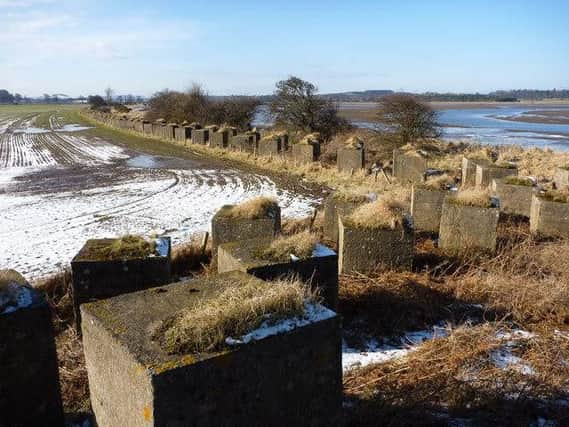The forgotten East Lothian WW2 sea defences and how to find them


After defeats in Northern France in early World War Two, Britain readied itself for a coastal invasion. East Lothian had an important strategic role in both wars and there are reminders all the way along the coast of a dark time in the East Coast's history.
General Edmund Ironside decided that 'Stop Lines' and beach defences should be built. Soldiers from around the UK and Polish servicemen worked on building the 'coastal crust' at weak points all along the East Coast of Scotland to defend against a sea-landing and to prevent tanks from getting any further than the beach. They were designed to delay any invading army until the British Army could be mobilised.
Advertisement
Hide AdRows of anti-tank concrete blocks can be seen at the coast near Hedderwick. The loops at the top were there for attaching barbed wire. These defences would also have been augmented by ditches and minefields. Many of these blocks were removed but there are still some at Winterfield Golf Course, where they have been piled up to prevent coastal erosion.
There's now a forest on the site on the links of Hedderwick where during the war this area was a large minefield. Canmore report that aerial photographs from 1945 show placements of barbed wire demarking this dangerous area. During World War One a system of trenches were dug on this site, and they along with the one surviving pill-box at Tyninghame are a rare survival of beach defences from this time. At the north end of 700 metres of a zig-zagging trench system there is a trench over a metre wide that has survived well. This length of the front line is longer than any surviving in Belgium and demonstrates the huge efforts that were made to fortify this coastline during the First World War.
There was also the threat of enemy planes landing on flat coastal ground. The area between Tyninghame and Hedderwick was identified as a weak spot and a series of ‘Anti-Glider Poles’, or vertical timber posts, were put up on beaches in a grid formation and stood for several hundred feet to prevent gliders from landing.
There have been efforts to remove sections of the defences to restore the countryside but Canmore, the National Record of the Historic Environment, now recognise them as part of our heritage.
